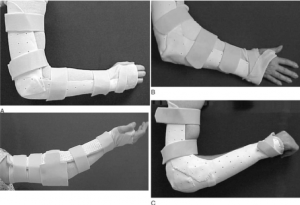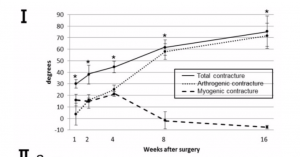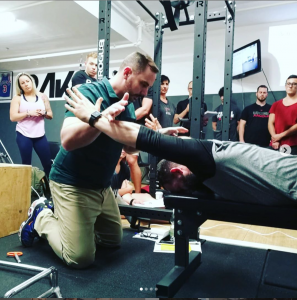When and How Static Stretching Can Actually Work
Welcome to 2020! I’ve made a goal of trying to get out at least one article a week through this blog, so I can actually start getting back into the habit of writing again, and what better topic to cover than static stretching?
I know in the past I’ve outlined how most uses of static stretching don’t actually work. That’s still true, but I wanted to expand on it a bit by giving some more of the research behind it, and showing some uses and modalities that can help if you want to use them.
Most stretching protocols involve end range holds with some level of force application against the resistive tissues for anywhere from 10-180 seconds. For the vast majority of these protocols, they show minimal to no improvement in range of motion, force production, or acute performance variables.
Phil Page did a fantastic review of existing literature back in 2012 HERE to group stretch modality studies into static, dynamic and pre-contraction (PNF, positional isometric, PAILs/RAILs, depending on your vernacular), and found most static stretching studies showed no significant difference in range of motion compared to pre-intervention, and actually decreased force production capabilities in the muscle following the stretch.

For most of these protocols, the duration of stretch is insufficient to produce any notable changes to structures like tendon pliability, joint capsule ligamental laxity, bone positioning, or muscle length in terms of sarcomeres in series or positional holds of each sarcomere relative to total stretch.
What they can do is create a mild reflexive relaxation in the muscle tissue, reducing sympathetic drive that could be causing the muscle to hold tension and resist a specific range of motion from being reached.
So in leymans terms, if you feel like muscles are tight and you need to chill out, shorter hold stretching will feel good and you’ll reduce how on edge you are, which always feels awesome. Fist bump for good feelings.
However, in the long run you likely won’t see much in terms of a structural adaptation to stretching other than just reducing tension. That’s reason enough for many to use it, as well as meditative breathing and other stress reduction modalities.
To adapt at the structure of a joint, longer holds are often required. Most gymnastic or martial art stretch programs require long term holds, in many cases at least 5 minutes each and in some situations approximating 30-60 minutes, in order to see the structural changes they’re after, and specifically used with younger kids who have much easier bones and joints to deform to the stretching.
These sport-specific protocols are not really well researched, but a few other things detailing these long holds are, so let’s use them as parallels.
This past summer, my wife dislocated her elbow in a track cycling accident, and following being in a sling for a couple of weeks to let the elbow heal up, it became very stiff and limited to range of motion. She was only able to get to about -40 degrees extension (normal is 0 to +10 degrees) and about 60-70 degrees of flexion (normal is closer to 150 degrees), so her elbow was functionally very limited and very stiff. This is common following dislocations, as in up to 10% of the population they will experience a joint fibrosis (myositis ossificans) limiting their mobility, and in populations where there’s radial head damage, that number jumps to 20%. She fell into the 1/10 lucky ones, I guess.
One option used for recovering this range of motion is to use progressive splinting, essentially pushing the joint to it’s end range of available motion and then splinting it there for 8-10 hours a day, adjusting the range based on how the joint is recovering motion. Sounds like static stretching, doesn’t it?
Comparing normative surgical recovery to progressive splinting recovery of range of motion, Doornberg et al found splinted patients gained an average of 51 degrees (SD 37 degrees) whereas surgical patients regained an average of 22 degrees (SD 24 degrees). You know you’re in trouble when the standard deviation is bigger than the effect size.
Veltman et al did a metanalysis of available info and found splinting improved range of motion by up to 10 degrees more than non-splinting normative physiotherapy alone.

Cool.
This means that in a very sensitive population like elbow MO who already respond well to most direct interventions, very long hold static stretch modalities that take 8-10 hours a day of holds for anywhere from 6-16 weeks can gain a whopping 10-20 degrees of range of motion over conventional means, and is less invasive and risky than surgical intervention to produce meaningful joint alterations.
That’s a big segway from the main point of static stretching, but using it as a come-back point, for an external device to push your joint to its end range for 8-10 hours a day and only gain 10-20 degrees of range of motion after 2-4 months of daily wear, it’s not likely that you’ll see much meaningful improvement in range of motion related to structural limits with 30-60 second holds once or twice a day.
If we go in the opposite direction and fixate a joint, we know the range of motion will begin to reduce, but is it the joint or the muscle tissue that’s limiting the available flexibility? Very few studies have been done in humans because of the need for dissection (there aren’t a lot of volunteers for those, plus the ethics meetings would be a bear), so we have only rat studies to look at.
Nagai et al did a cool study where they used external fixation on a rat knee to see what contributed the most to joint range of motion limitations over time. They found that both joint and muscle tissue restrictions contributed in the first few weeks, but then an inflection point happened where muscle tissue adapted and actually started to improve overall tissue quality and pliability after about 4 weeks, whereas the joint continued an almost linear rate of degeneration with extended fixation.
Muscles can adapt pretty well to whatever situation they’re in, and especially so with biarticular muscles like the quads and hamstrings. Joints don’t like to be locked down though.

This comparison gives info as to why the elbow becomes stiff following injury and sling use, as the joint starts degrading its available range of motion. There’s info about tissue adaptations, spindle cell and mast cell formation, plus hydration changes, but I won’t get into that too much today. Just know it’s primarily joint stuff that causes most range of motion loss following joint specific injuries, and this is where very long hold stretch protocols seems to be the best in terms of regaining lost range of motion.
So in even the most clinically extreme populations, very long hold static stretching (up to half of the day) causes only relatively small increases in mobility over other modalities. It’s definitely not possible to use extremes to apply to the averages, but this gives a really clear example of kind of the upper ends of what could be achieved in terms of time, frequency, and results in a highly susceptible population, so if you’re not doing this much stretch application and aren’t this sensitive to change, you likely won’t get the same results, as evident by the Page article referenced earlier (ie. no significant difference).
So average folks likely won’t see much benefit to structural adaptations for static stretching unless they hold the positions for a ridiculously long time, daily, for weeks or months on end. For clinical populations, they see better benefits, but it’s small and specific to their specific concerns. Using rehab approaches to fitness problems never goes well.
If you enjoy stretching, and it feels good for you, keep doing it. There’s definite benefit to modulating muscle tension when needed, but in terms of improving joint range of motion, there’s better ways to do it.
If you want to use longer hold static stretches to potentially alter joint mechanics or capsular stuff, be prepared to hang out there for a longer time than you’re used to. Start with 20 minute holds and see how you respond to that. If your extremities start to tingle, back off a bit so you aren’t losing circulation or stretching a nerve, but progress will be slow regardless of how aggressively you approach the stretch.
For a deeper dive into all things mobility, I’m teaching a 1-day workshop in Vancouver May 2 on Scientific Application to Mobility Training. If you can make it out, you’d definitely get a much deeper understanding on the body of evidence for different approaches, plus what methods to use in different situations.
